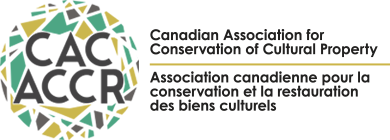J.IIC-CG VOLUME 21 (1996)
The Conservation of a Three-Way Painting
On occasion, unusual works of art such as three-way pictures are found in museum collections. Little documentation exists on their history or conservation treatment. This article provides some historical context for these objects, and presents a case study of the conservation of a painted three-way picture on canvas and wood. A three-way picture permits the display of three different images by employing a simple handmade device. It is assembled so that one image lies flat at the back of a box frame, while two other images can be seen on each side of narrow vertical strips which are mounted in a strainer placed in front of the background image. Although the exact origins of these objects are obscure, they are mentioned in English literary texts of the seventeenth century. Their spread into popular culture, in the form of store signs or optical toys, is poorly documented. The painting discussed in this report probably dates from the early nineteenth century, and is part of the collection of the National Museum of American Art of the Smithsonian Institution. The treatment consisted of: removing the painted canvas strips and the painted panel, consolidating loose paint, removing dirt and varnish, repairing tears, reinforcing the folded ends of the canvas strips, integrating losses, and reassembling the work.
[ download not available ]
